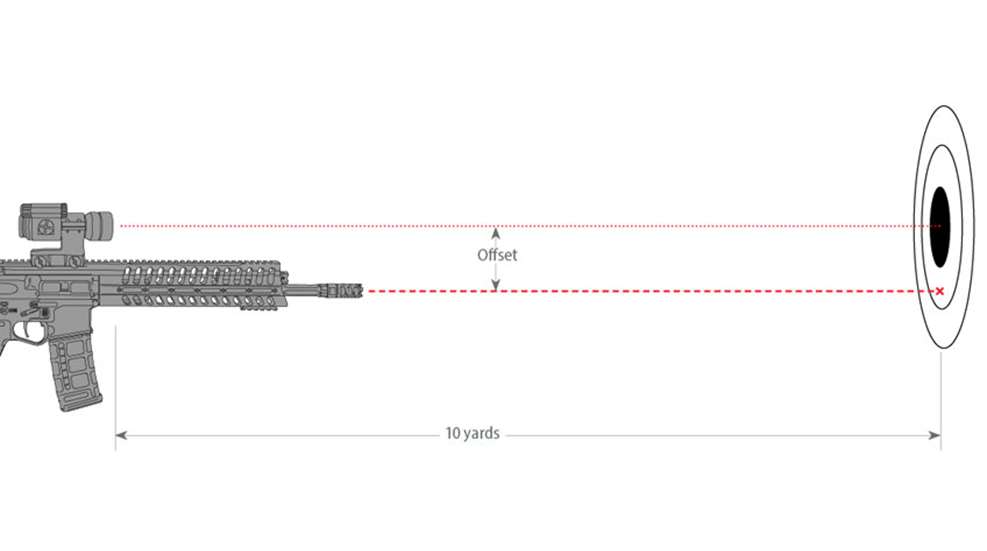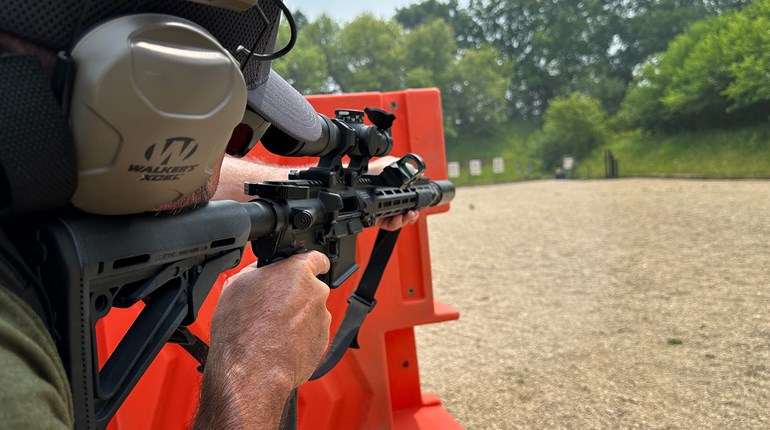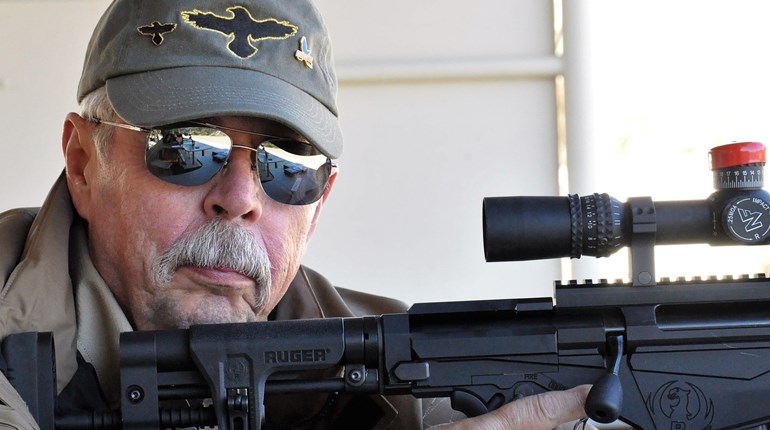
What’s mechanical offset and how do you deal with it? If you have an optic on a firearm, particularly a rifle, the line-of-sight through the scope is higher than the center of the bore, and that difference is what we call offset. In other words, when you take a shot the bullet is going to exit the barrel as much as several inches lower than the line of sight.
While you might have a dedicated rifle specifically zeroed for the distances typically encountered in a home-defense scenario, it’s not a bad idea to have some sense of where rifles with farther zeroes might impact at close range. You should be capable of making decisive hits with any firearm you might lay your hands on, so even a dedicated precision rifle carefully calibrated at 200 yards could be used in a life-or-death situation.
Let’s use a standard AR-15 carbine with a 16-inch barrel and a red-dot sight zeroed at 200 yards as an example. How this works:
Measuring from the center of the barrel to the center of the optic will yield your offset. Typically, this distance is somewhere between 2.5 to 3.0 inches for an AR-15-style rifle or carbine. At very close ranges, like 3 to 15 yards, the strike of the bullet is going to be around 2.5 inches low.
Why is this important? If you’re like most folks I talk to, you employ your AR rifle for a variety of uses, including home defense. If you have to shoot at the close ranges inside a home, wouldn’t it be a good idea to have the mechanical offset figured out?
To check this out, you’re going to need about 50 rounds of ammunition and a target. I suggest you fire three-shot groups, holding center, from 3, 7, 10, 15 and 25 yards. I think you’ll discover that your rounds are striking somewhere around 2 to 3 inches low at 3, 7 and 10 yards. At 15 yards, the group will still be low, but a little closer to point-of-aim. At 25 yards, point-of-aim and your three-shot group should be pretty close to coinciding.
Next, try shooting those same three-shot groups at 3, 7, 10 and 15 yards again, but this time hold high to account for the offset you observed the first time around (remember, the 25-yard group should be close enough to the center to not warrant significant correction). If you hold correctly, you should end up with centered hits at each of the distances. One quick example might be holding 3 inches high at 3 yards. Continue to practice getting used to the various mechanical offsets by shooting snaps—one shot standing from ready—at each of the various ranges until you thoroughly understand your offset holds.
Mechanical offset isn’t just a concern with scopes on ARs—it’s going to be a factor on any firearm that employs any type of sight mounted significantly higher than the barrel. You should understand how the vertical distance between the optic’s line-of-sight and your rifle’s barrel affects your point-of-aim. Drag all those scoped guns out of the safe, go to the range and work this drill, and you’ll be ready should you have to take a precision shot at close range.






































